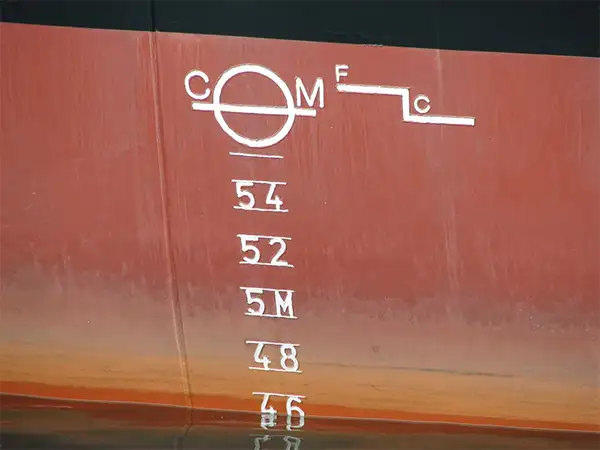Plimsoll Day, celebrated on February 10th, is not just another day in the calendar; it's a tribute to a man who changed the seas, making them a safer place for those who traverse the waves. This day honors Samuel Plimsoll, a British politician and social reformer known affectionately as "the sailors' friend." His legacy? The Plimsoll line—a simple yet revolutionary marking on a ship's hull that determines the safe limit to which a ship can be loaded.
The Man Behind the Mark
Samuel Plimsoll was not your average Victorian gentleman. Faced with the perilous condition of overloaded ships, which often led to shipwrecks and loss of sailors' lives, Plimsoll embarked on a campaign against what he called "coffin ships." These were vessels so overloaded that they were more likely to end up at the bottom of the sea than reach their destination. It's rumored that Plimsoll, a man of the sea at heart, was as comfortable debating in Parliament as he was swimming with sharks—figuratively speaking, of course.
 The Plimsoll line, while it may sound like the latest trend in nautical footwear, is in fact a critical maritime safety feature. This isn't just any line; it's a lifesaver, a guardian of the seas, if you will. Envisioned by Samuel Plimsoll in the late 19th century, this seemingly simple circle with a horizontal line through it on a ship's hull has saved more lives than all the life jackets in the world.
The Plimsoll line, while it may sound like the latest trend in nautical footwear, is in fact a critical maritime safety feature. This isn't just any line; it's a lifesaver, a guardian of the seas, if you will. Envisioned by Samuel Plimsoll in the late 19th century, this seemingly simple circle with a horizontal line through it on a ship's hull has saved more lives than all the life jackets in the world.
At its core, the Plimsoll line is about preventing overloading. In the days before its inception, shipowners, driven by greed, would load ships to the brim, often leading to tragic sinkings. Enter Samuel Plimsoll, a man on a mission, armed with nothing but determination and a keen sense of right and wrong. He fought tirelessly for the introduction of a mandatory line on ships that would visually demonstrate when a ship was overloaded. The result? The Plimsoll line, a mark that indicates the maximum depth a vessel can safely be submerged in water, varying with season and water types—freshwater, saltwater, tropical waters, and so on.
The Plimsoll line isn't just a line; it's a complex code. The markings around it tell a story of where a ship can safely travel, taking into account varying water densities and temperatures. For instance, a ship might ride lower in the buoyant waters of the tropics than in the dense, salty waters of the North Atlantic. It’s a testament to Plimsoll’s ingenuity that with just a glance, sailors can understand the limitations and capacities of their vessel.
Today, the Plimsoll line, or load line, is recognized worldwide, thanks to international conventions like the International Convention on Load Lines (ICLL), which standardizes safety measures across the globe. It's a universal language speaking of safety, caution, and respect for the forces of nature. Without it, navigating the high seas would be a game of Russian roulette, with ships pushing the limits of safety for profit.
The influence of the Plimsoll line extends beyond the maritime world. It's a symbol of how a simple idea, driven by a desire to protect, can create waves of change. It’s a lesson in persistence, showing that one person, much like Plimsoll, can fight against the tide of opposition to bring about significant societal improvements. And yes, it even inspired the name of a shoe, the Plimsoll sneaker, known for its simple, horizontal line—the sartorial nod to maritime safety.
In essence, the Plimsoll line is a reminder that safety should never be compromised in the pursuit of progress. It's a legacy of looking out for the little guy, ensuring that the greed of the few doesn't endanger the lives of the many. So, the next time you see the Plimsoll line on a ship, remember, it's not just a line; it's a lifeline.
Celebrating Plimsoll Day
How does one celebrate Plimsoll Day, you ask? Well, you could start by not overloading your bathtub or swimming pool and respecting your own personal Plimsoll line. Maritime museums and safety organizations often mark the day with events highlighting ship safety's importance and maritime legislation's history. For those more inclined to humor, wearing Plimsoll shoes (yes, named after Samuel Plimsoll for their water-repelling properties) and striking a pose next to any line you can find might just float your boat.
In a world where "more is better" often reigns supreme, Plimsoll Day serves as a reminder of the importance of safety over profit. It's a day to remember that sometimes, the simplest solutions—like a line on a ship's hull—can have the most profound impact on saving lives and preventing disasters. Plus, it's the only day of the year when drawing lines and talking about load limits can lead to laughter and celebration rather than yawns and eye rolls.
So, this Plimsoll Day, let's raise our glasses (but not too high, mind you, we wouldn't want to exceed our own Plimsoll lines) to Samuel Plimsoll, a man who proved that one person can indeed make a wave of difference. Whether you're a sailor, a history buff, or just someone who appreciates a good line, Plimsoll Day is a day to remember that safety should always be the captain of our ship.
Please Share our Content






 The Plimsoll line, while it may sound like the latest trend in nautical footwear, is in fact a critical maritime safety feature. This isn't just any line; it's a lifesaver, a guardian of the seas, if you will. Envisioned by Samuel Plimsoll in the late 19th century, this seemingly simple circle with a horizontal line through it on a ship's hull has saved more lives than all the life jackets in the world.
The Plimsoll line, while it may sound like the latest trend in nautical footwear, is in fact a critical maritime safety feature. This isn't just any line; it's a lifesaver, a guardian of the seas, if you will. Envisioned by Samuel Plimsoll in the late 19th century, this seemingly simple circle with a horizontal line through it on a ship's hull has saved more lives than all the life jackets in the world.








 "Sláinte!" is a traditional Irish expression used as a toast, equivalent to "Cheers!" in English.
"Sláinte!" is a traditional Irish expression used as a toast, equivalent to "Cheers!" in English.